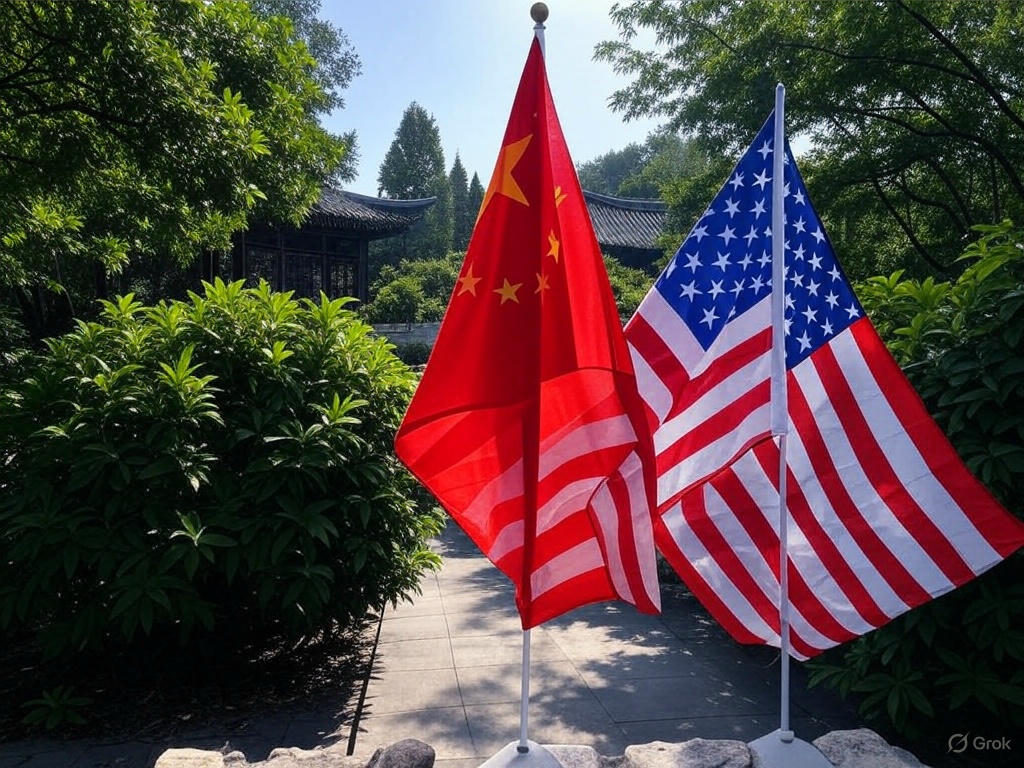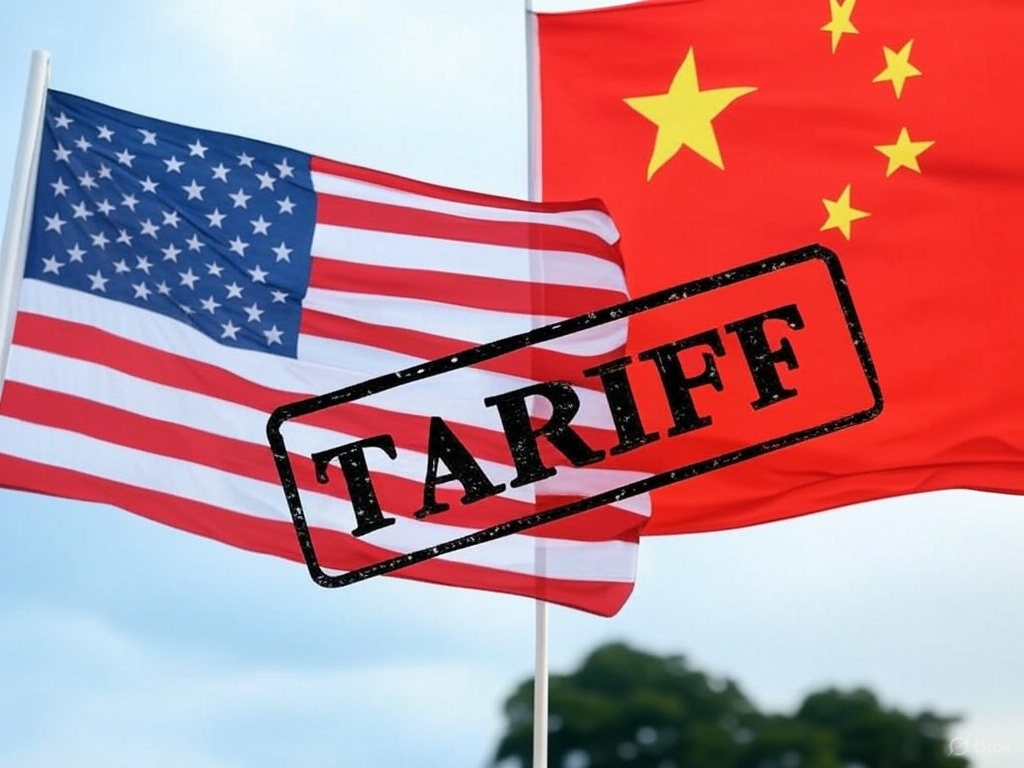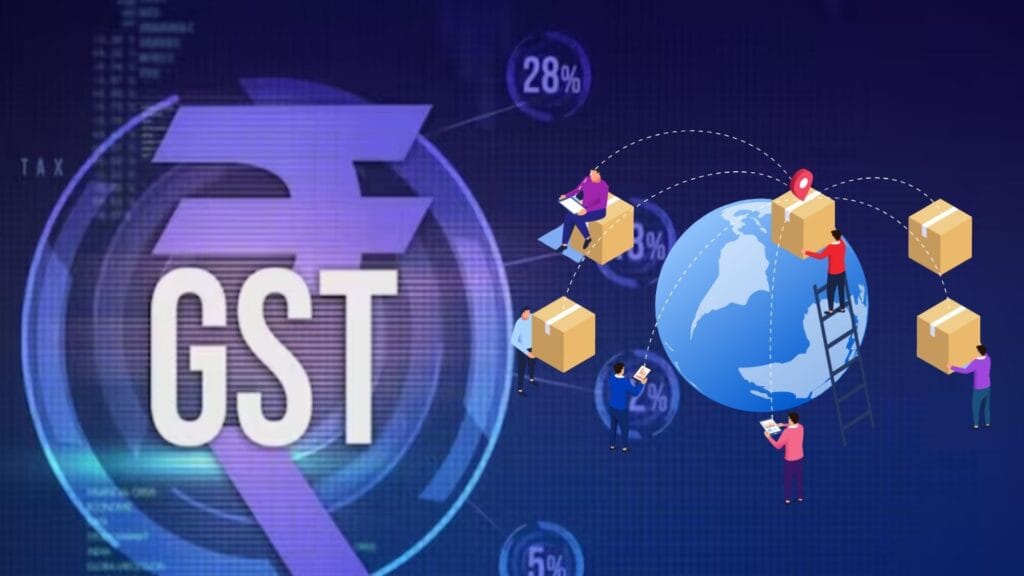The recent wave of U.S. tariffs on Chinese imports has triggered predictable market anxieties – dropping equity values, cautious commodity trading, and gloomy inflation forecasts. But these reactions miss a fundamental shift in global economic dynamics. The world of 2025 is not the world of previous trade conflicts, and the economic physics governing tariffs has changed.

AI generated representative image
Deflationary China Transforms the Tariff Equation
At the heart of this transformation is China’s economic predicament. Far from the manufacturing powerhouse that once dictated global pricing, today’s China struggles with persistent deflation and systemic overcapacity. This is not a cyclical downturn but a structural condition reflecting deeper issues – excessive industrial buildout, sluggish domestic consumption, and diminishing returns on investment.
The numbers tell a stark story. Producer prices in China have contracted for ten consecutive months, while consumer prices fell 0.7% in February alone. Despite aggressive monetary stimulus, Beijing has failed to ignite sustainable domestic demand. This deflationary environment has greatly weakened Chinese exporters’ pricing power, forcing them to prioritize volume over margins just to keep operations running.
And this weakness alters the tariff mechanism. Traditional economic theory holds that import tariffs function as a tax on consumers – foreign producers raise prices to offset the tariff, and domestic buyers bear the cost. But this assumes producers have pricing power. In today’s context, with Chinese manufacturers desperate to maintain market share amid falling domestic prices, that assumption no longer holds.
The New Economics of Tariffs: A Value Transfer, Not a Consumer Tax
Under these conditions, U.S. tariffs are likely to operate more as a value extraction mechanism than an inflationary force. Rather than raising prices for American consumers, Chinese producers absorb most of the cost through compressed margins, currency adjustments, and operational efficiencies. Even if only 70–80% of the tariff is absorbed by Chinese producers, it could generate billions in U.S. revenue with minimal impact on consumer prices or the CPI index.
The tariff revenue flows to the U.S. Treasury while the economic pain concentrates in Chinese manufacturing centers. This dynamic creates a short-term advantage for American policymakers. They can apply economic pressure on Beijing while minimizing domestic inflation risk. For a U.S. administration navigating both geopolitical competition and domestic economic concerns, this represents a rare policy tool with limited immediate downsides. Meanwhile, China faces an unenviable dilemma. To maintain employment and social stability, it must keep export factories running even at reduced profitability. This effectively means subsidizing American consumption – either through direct government support to exporters or by allowing manufacturers to operate at unsustainable margins. Beijing’s reliance on export-led growth has become a strategic vulnerability in this new tariff landscape.
Beyond Inflation: The Real Risks of Trade Confrontation
While tariffs may not trigger significant U.S. inflation in this environment, they nonetheless carry substantial long-term risks. The most immediate is supply chain fragmentation. As trade barriers persist, companies will restructure operations to reduce exposure to tariff-affected routes, potentially sacrificing efficiency for predictability. This process, already underway since 2018, accelerates with each new round of restrictions.
More concerning is the potential for financial contagion. If Chinese exporters face prolonged margin compression, debt servicing issues could emerge, particularly among smaller manufacturers without state backing. Given China’s significant position in global supply networks, such distress could reverberate through emerging economies dependent on Chinese intermediate goods or capital.
The innovation landscape may also shift. Faced with persistent trade barriers, China will likely accelerate its push toward technological self-sufficiency and higher-value production. While this transition won’t happen overnight, it could eventually reduce U.S. leverage in strategic sectors like semiconductors, artificial intelligence, and green technology. Today’s tariff advantage might come at the cost of tomorrow’s competitive position.
Strategic Tradeoffs and National Models
For the United States, the immediate benefits of tariffs in a deflationary environment must be weighed against these longer-term considerations. The strategy works now precisely because China’s economy is weak – but policies predicated on continued Chinese weakness carry inherent risks.
For China, the challenge is existential. Its export-oriented development model faces diminishing returns, yet the transition to domestic consumption remains painfully slow. Tariffs exacerbate this dilemma, forcing difficult choices between short-term stability and long-term economic restructuring.
For third parties like India, opportunity beckons. As global businesses diversify beyond China, countries with stable governance, improving infrastructure, and favorable demographics stand to benefit. India’s expanding manufacturing capacity and strategic alignment with Western powers position it well to capture redirected investment flows – provided it can streamline regulations and demonstrate policy consistency.
A New Framework for Understanding Trade Conflict
The conventional wisdom on tariffs – that they inevitably harm imposing countries through higher consumer prices – needs revision in a deflationary world. When major exporters lack pricing power, the economic burden shifts dramatically, converting tariffs from consumption taxes to profit-sharing mechanisms between foreign producers and domestic treasuries.
This doesn’t make tariffs sound economic policy in the long run. They still distort markets, reduce global efficiency, and risk political escalation. But their short-term economic impact diverges significantly from textbook predictions when applied to a deflationary economy with structural overcapacity.
For investors, policymakers, and business leaders, this requires a more nuanced approach to trade tensions. The inflationary fears that dominated previous tariff discussions may prove misplaced. Instead, attention should focus on second-order effects: supply chain reconfiguration, capital reallocation, and the acceleration of China’s technology ambitions.
In this new paradigm, China bears the immediate cost of tariffs – but the long-term consequences remain far less certain.




